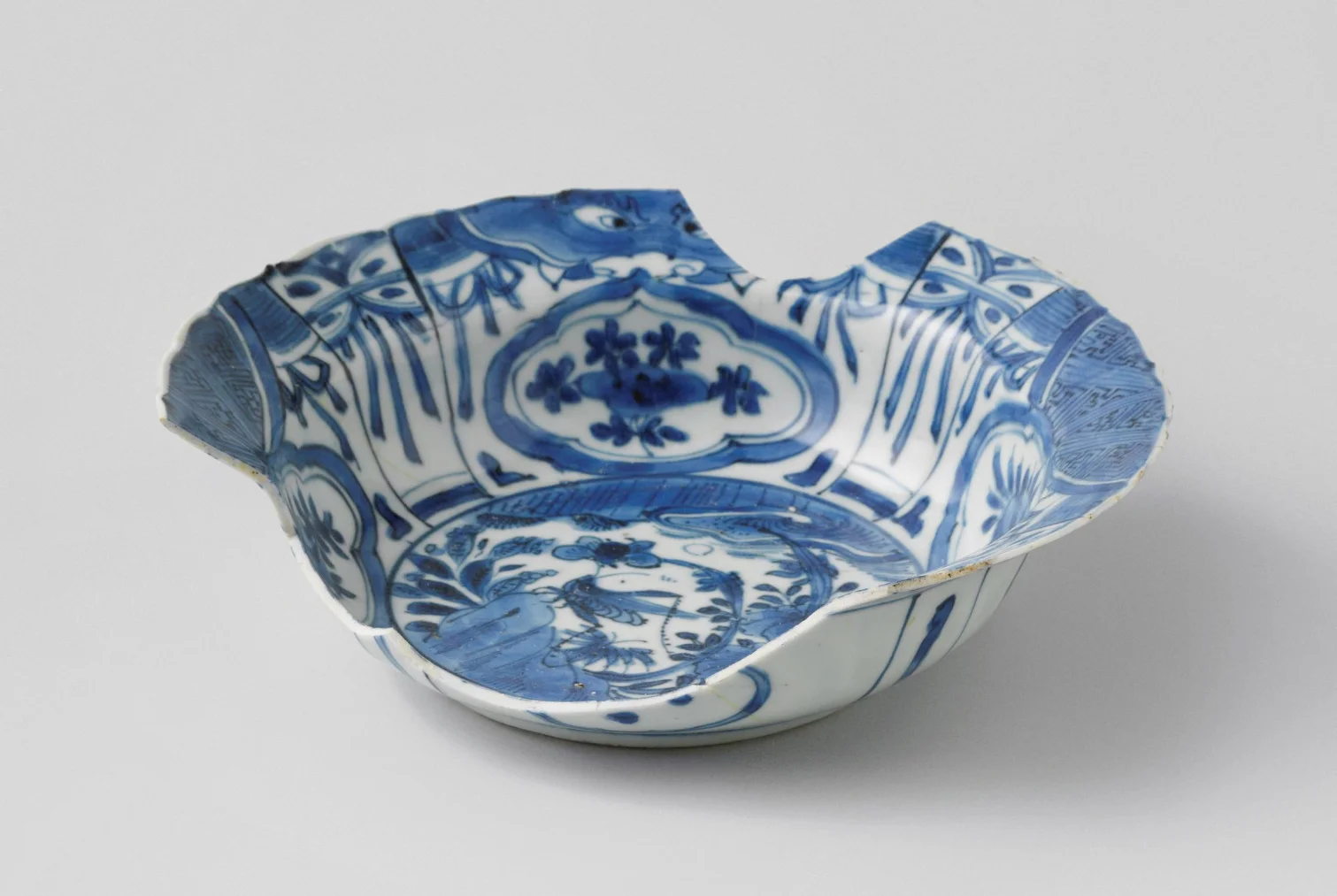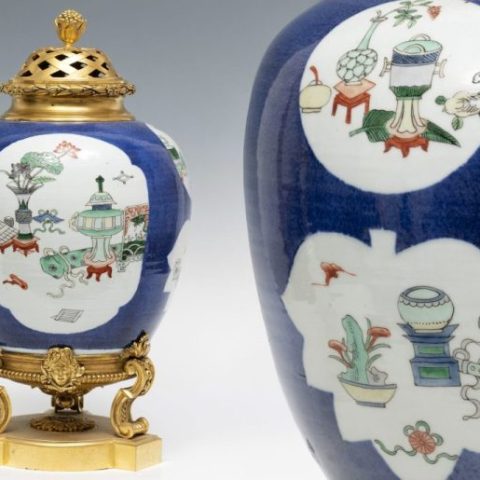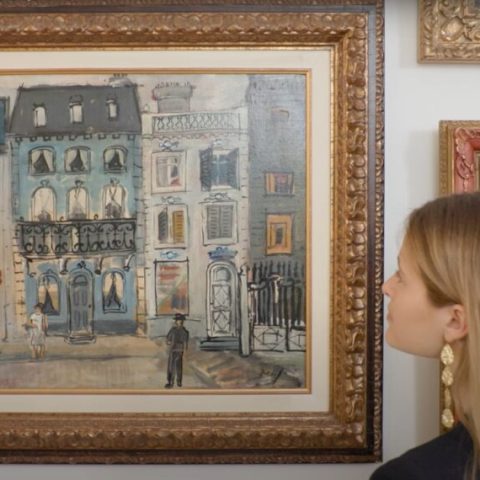Chinese art fascinates collectors from all over the world. Its rich history and the mastery of its artisans make it an object of desire for many. But how do you buy authentic, quality Chinese art? This guide introduces you to the Chinese art market, its history, and the most important tips to follow before you start collecting.
Introduction to Chinese Art: An Ancient Legacy
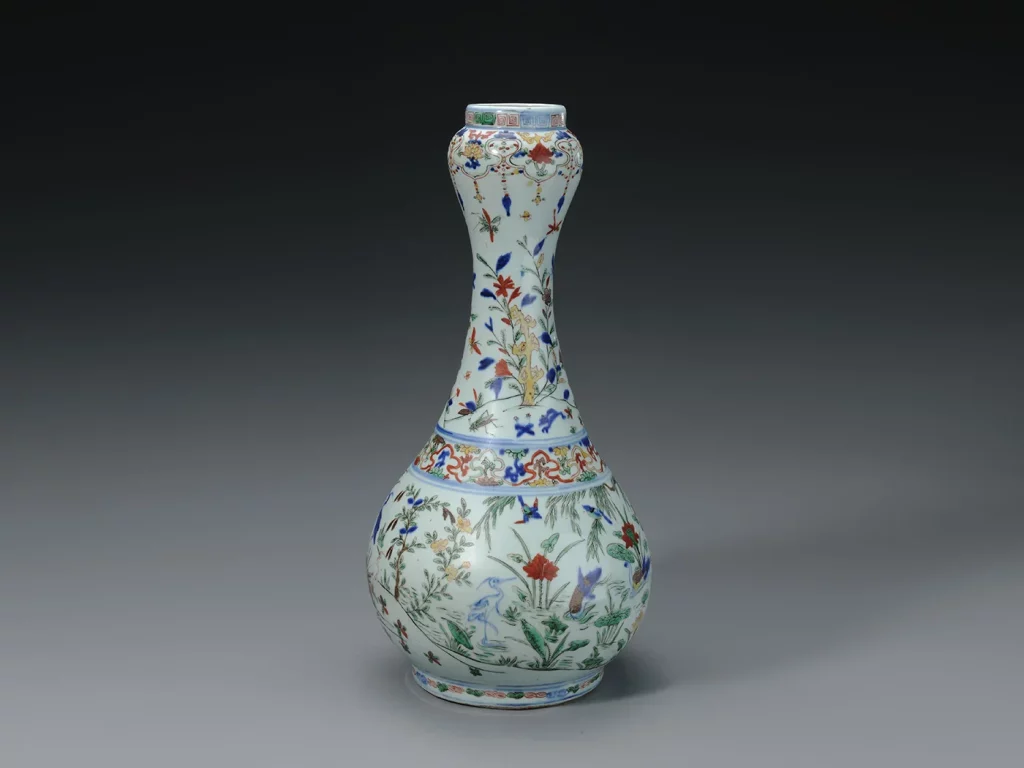
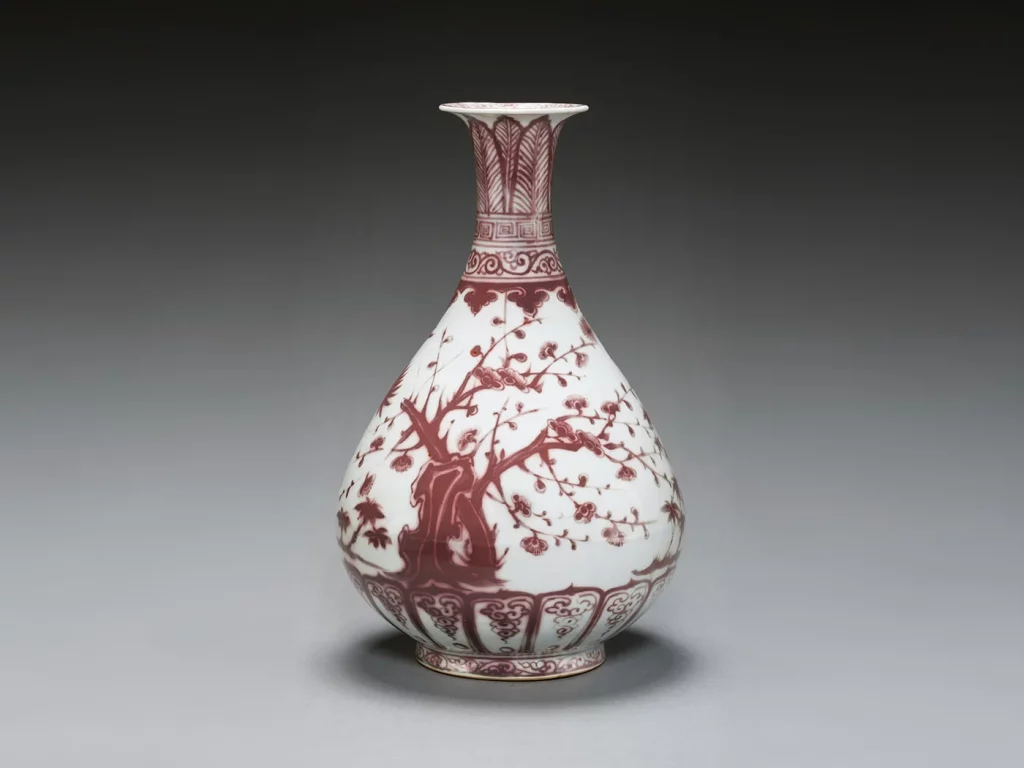
Ming Dynasty
Chinese art, with a history spanning millennia, has undergone a remarkable evolution over the centuries. During the Ming Dynasty (1368-1644), porcelain reached an exceptional level of quality and sophistication, establishing itself as the period of greatest splendor in the history of Chinese art. Porcelain from this period, especially blue and white porcelain, is still sought after today by collectors of Chinese art for its delicacy and technical perfection.
Qing Dynasty
After the fall of the Ming Dynasty, during the Qing Dynasty (1736-1912), some external influences were incorporated, such as pink glazes or different typologies coming from metalwork. Even so, high quality standards in porcelain production continued to be maintained at this time. However, as the 19th century progressed, the quality of the works gradually began to decline.
The three main categories
Throughout these periods, the artistic production of Chinese art is diversified into three main categories:
- Pieces for export: made specifically for trade with foreign countries, adapted to the tastes and preferences of international markets. These items played a crucial role in China’s trade relations with the rest of the world.
- Pieces for the imperial court: high quality, intended for the exclusive consumption of the imperial family.
- Pieces for the domestic Chinese market: produced to meet the demands of the domestic market, accessible to a wider range of the population.
Tips for buying Chinese Art
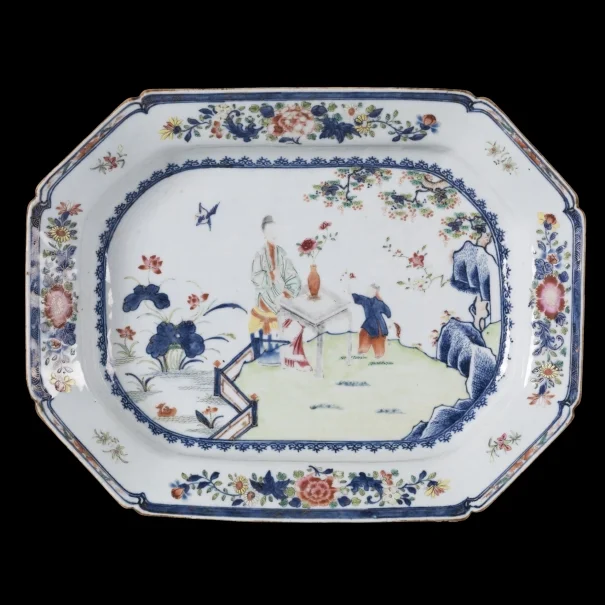
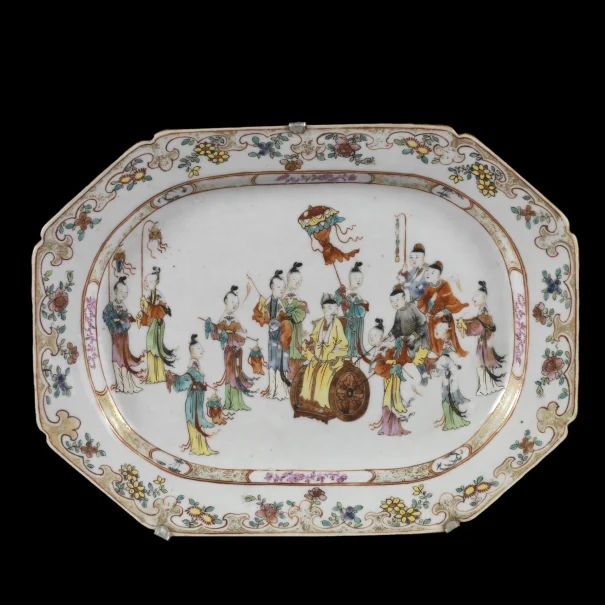
Here are some tips in order to successfully start collecting Chinese art:
Condition of the pieces
It is essential to know how to identify the condition of the pieces. Before acquiring a piece it is necessary to inspect it thoroughly to analyze the presence of breaks, restorations or repainting. In our direct sales catalog and in our auctions you can see in detail each and every one of the pieces, and if you need more detail you can contact our team of experts.
Specialization
It is important to define a focus for the collection. You can choose to focus on a specific era, such as the Ming or Qing dynasty, or different reigns such as Kangxi or Qianlong; or even on a particular typology, such as “pink family”, “green family” or “Peranakan” porcelain, more influenced by Malay culture. Another good option would be porcelain intended for export, known for its designs adapted to Western tastes.
Bibliography
Acquiring specialized bibliography is essential, so you will be able to deepen your knowledge of the different styles, periods and manufacturing techniques. This knowledge base will allow you to properly identify and value the pieces.
Expert advice
Finally, consider the advice of experts, establishing links with professionals and auction houses specialized in Chinese art. At Setdart, we can offer you a free valuation of your pieces if you are interested in selling them, and personalized advice if you have doubts about any of the lots in our catalog, both in direct sale and at auction.
How to analyze a piece of Chinese art
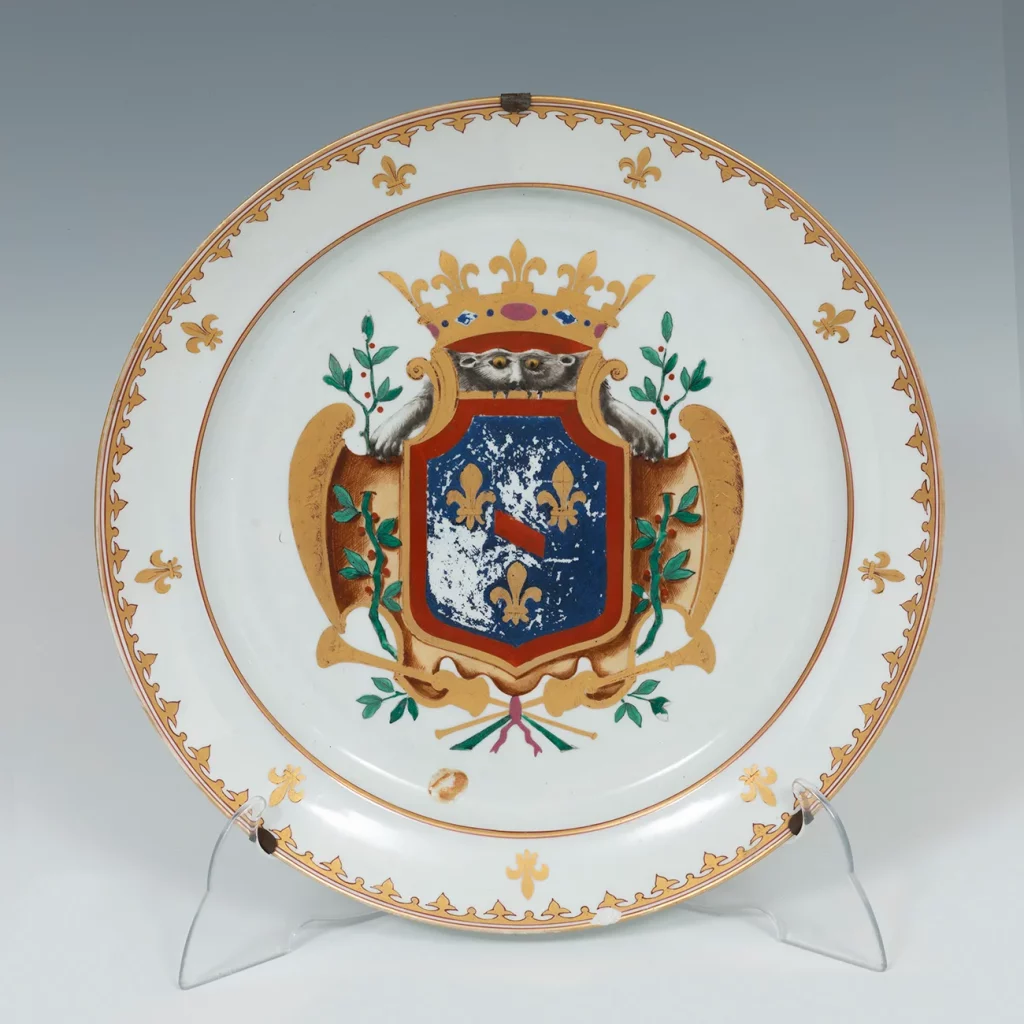
The best way to learn is by doing. In our direct sales catalog and in our auctions, you will find a large selection of Chinese and Oriental art. We have selected this Qing dynasty platter (lot 40002900) for an example analysis:
A Qing Dynasty platter
The first thing that strikes us is the large coat of arms that dominates the field of the plate. Although it has some losses in the enamel, it does not detract at all from the piece, as it could well be that of the House of Bourbon-Conti, with which it bears great similarities. Formally, the dish must have been made in the kilns of Jingdezhen during the period of the Qianlong emperor, around 1750. It was probably part of a dinner service that, from Poyang Lake, crossed southern China on ships and carts to Guangzhou. There, it was loaded onto European ships bound for France.
We are, therefore, before a piece of Chinese porcelain made for export with enamels of the “pink family” and a coat of arms of an important French family, closely related to the Gallic royalty. A work of great importance, which would be a very good starting point to begin a collection of Chinese art, something you can do through our selection of direct sales and our auctions.
We help you buy and sell Chinese art
So, if you wish to delve into the fascinating world of Chinese art collecting, SETDART will be happy to advise you on what is the right piece for your collection. You can contact us and explore our auction calendar and direct sale catalog. And, of course, we are at your disposal to accompany you in the sale of your pieces and achieve the best possible results. Just ask for a free valuation and we’ll get to work.

